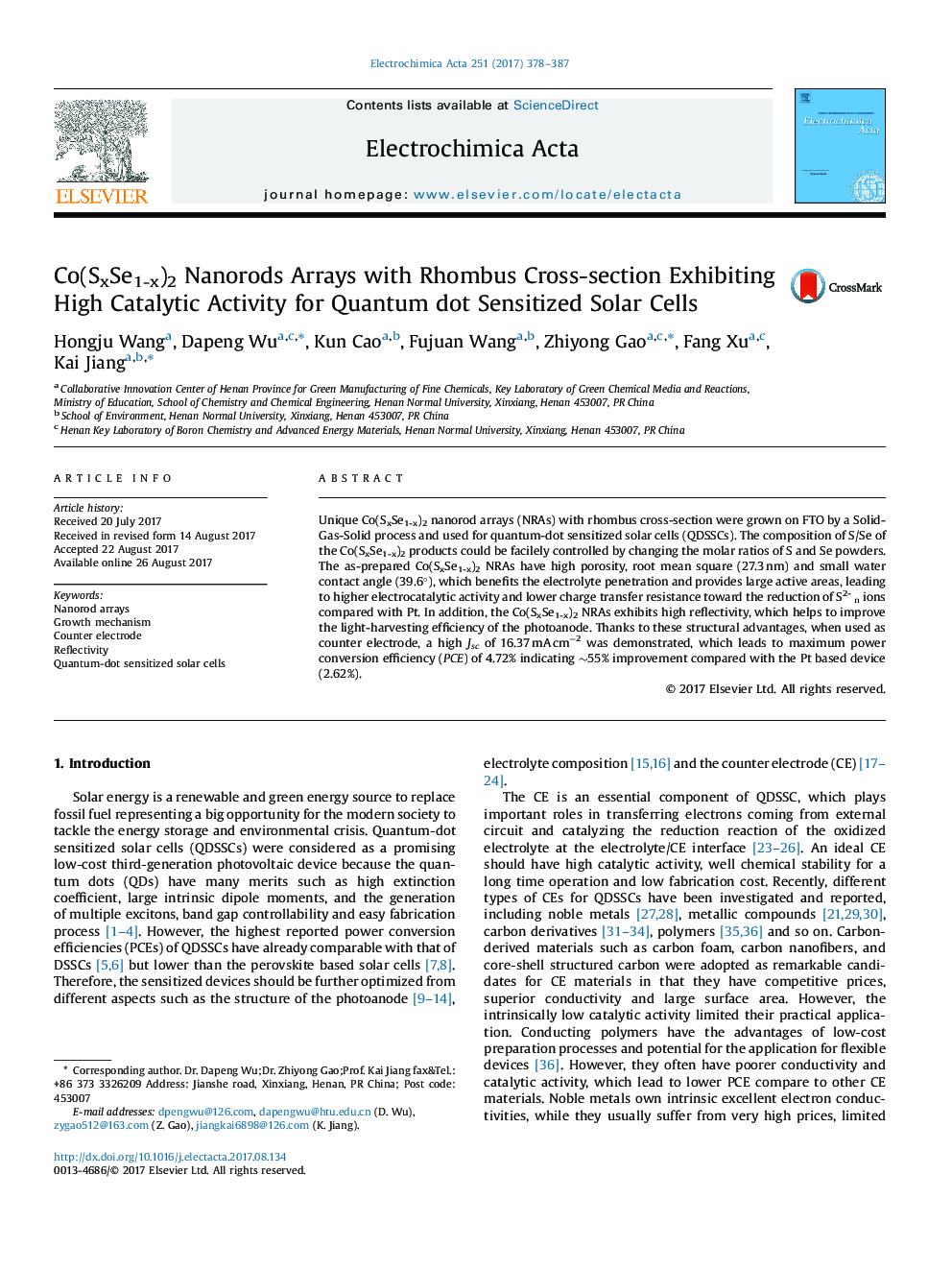| Article ID | Journal | Published Year | Pages | File Type |
|---|---|---|---|---|
| 6469931 | Electrochimica Acta | 2017 | 10 Pages |
â¢Co(SxSe1-x)2 NRAs with Rhombus cross-section were grown on FTO by S-G-S method;â¢NRAs show fast electron transfer to improve the catalytic performance of the CEs;â¢NRAs exhibit favorable roughness and wettability for enhanced electrolyte diffusion;â¢NRAs have high reflectivity to promote light-harvesting efficiency of the device;â¢A maximum PCE of 4.72% was demonstrated, which is â¼55% higher than Pt CEs.
Unique Co(SxSe1-x)2 nanorod arrays (NRAs) with rhombus cross-section were grown on FTO by a Solid-Gas-Solid process and used for quantum-dot sensitized solar cells (QDSSCs). The composition of S/Se of the Co(SxSe1-x)2 products could be facilely controlled by changing the molar ratios of S and Se powders. The as-prepared Co(SxSe1-x)2 NRAs have high porosity, root mean square (27.3 nm) and small water contact angle (39.6°), which benefits the electrolyte penetration and provides large active areas, leading to higher electrocatalytic activity and lower charge transfer resistance toward the reduction of S2-n ions compared with Pt. In addition, the Co(SxSe1-x)2 NRAs exhibits high reflectivity, which helps to improve the light-harvesting efficiency of the photoanode. Thanks to these structural advantages, when used as counter electrode, a high Jsc of 16.37 mA cmâ2 was demonstrated, which leads to maximum power conversion efficiency (PCE) of 4.72% indicating â¼55% improvement compared with the Pt based device (2.62%).
Graphical abstractUnique Co(SxSe1-x)2 nanorod arrays (NRAs) with rhombus cross-section were grown on FTO by a Solid-Gas-Solid process and used to improve the performance of CdS/CdSe co-sensitized solar cells.Download high-res image (177KB)Download full-size image
